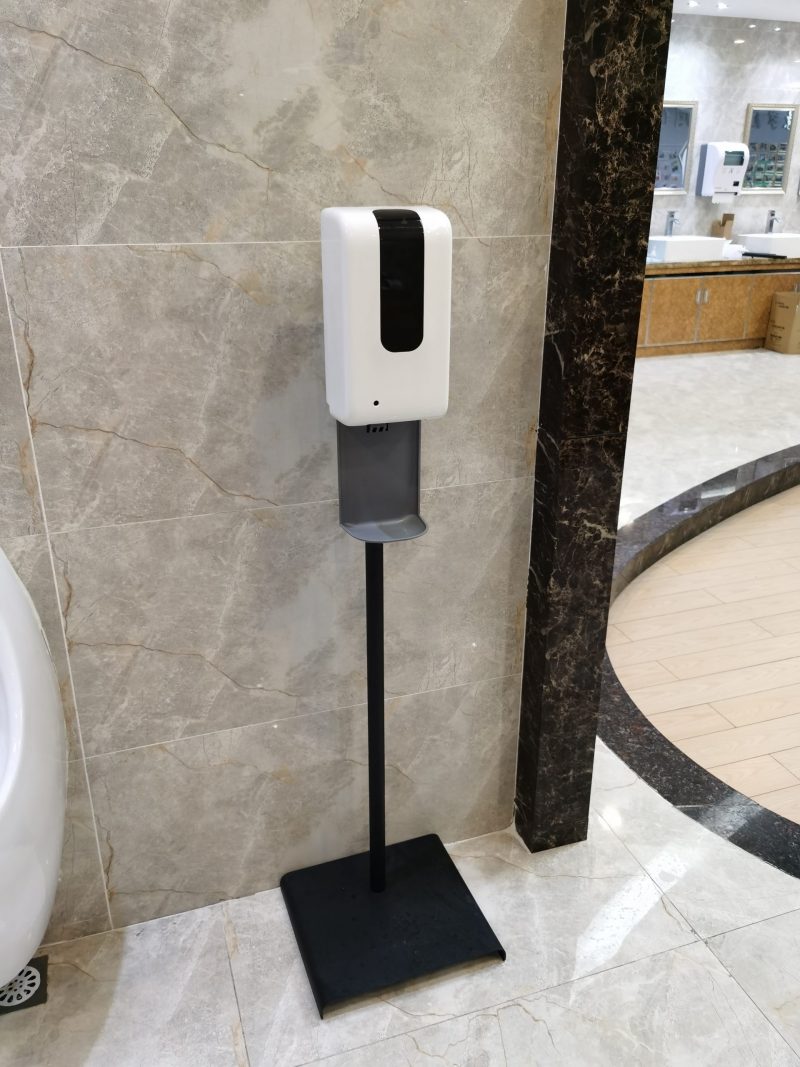Why Disinfection of your objects is necessary?
Most new generation objects are waterproof. Now, it is totally inadvisable to put the objects under an open tap. The manufacturers, in fact, ask you not to submerge the objects under any circumstances. Common sense dictates that you are careful, but it doesn't hurt to underline its so try to use outdoor hand sanitizer dispenser.

Better to use moistened cloths
Water resistance is a property that should only be useful in emergencies. It is there to give you peace of mind. On the other hand, think that the ability to be waterproof could be damaged by damage to the device caused by a hypothetical fall. In the event that, despite what we tell you, you put your objects in water, you should know that this water will enter the ports.
How to clean the back surface and sides of the objects
To begin with, when you get ready to clean your objects by outdoor hand sanitizer dispenser turn it off. If you can remove the battery, do so. To clean and disinfect the back and sides of the objects, you should use 70% isopropyl alcohol or a disinfectant made from alcohol. Don't use bleach.
Take a microfiber cloth and moisten part of it with the rubbing alcohol. Or spray a section of the washcloth with the spray. Thoroughly wipe the cloth across the back surface and down the sides. Let it dry. A wipe containing rubbing alcohol may also work.
How to clean the screen with outdoor hand sanitizer dispenser?
Microfiber cloth with isopropyl alcohol for the display except direct using outdoor hand sanitizer dispenser you can also use a microfiber cloth slightly moistened with a solution of isopropyl alcohol. Dampen only one corner or part of the cloth. Review the entire screen well, without leaving any corner. Move the cloth horizontally and vertically, over and over again.
Hot water with very little soap: step by step
We explain, step by step, how to clean the objects like screen, other surfaces and cover with hot soapy water except outdoor hand sanitizer dispenser. In case you don't have isopropyl alcohol.
- Prepare a bowl of hot water. Add a little common soap.
- Turn off the objects and remove it from its case. Bring it to the bowl.
- Take a microfiber cloth and moisten it at one of its cornerswith the soapy water.
- Moreover, delicately, passing the wetted area of the clothfor the screen, the sides and the rear.
- Make sure that no water gets into any openings, such as the charging port.
- Similarly, now hold the cloth by a corner or section that are dry, and go over all the surfaces again.
- Let the objects, which you keep off, dry completely.
- In a matter of minutes, you can start it up again.
- In addition, when you finish disinfecting your objects, wash your hands.
Other than outdoor hand sanitizer dispenser microfiber cloths is used
Microfiber cloths are essential other than outdoor hand sanitizer dispenser, so we advise you to always have them at hand. In addition, they are versatile. They are used for glasses, computer screens and TV screens. Keep in mind that the glasses are accompanied by a small cloth of this style in their cover, so you could have a large number of these cloths stored in drawers.
Sand and fluff
Sand and lint can get stuck in the small ports of the objects. They can also end up caught in the indentations that, for design reasons, the objects has.
The best way to remove grit or lint is to use masking tape
For the tiny speaker holes, where the tape cannot reach, use a toothpick. Another option that you can use except outdoor hand sanitizer dispenser always with all prevention and caution is a small vacuum tool. There are tiny vacuums that can help you.
5 products you should never use to clean your objects
Window cleaner
A window cleaner seriously deteriorates the oleo phobic layer that covers the objects screen. This damage makes your objects more vulnerable to scratches. Any cleaning product with abrasive agents can damage the surface of the screen.
Kitchen cleaner
Neither bleach and nor other household and kitchen cleaning products.
Kitchen paper
Kitchen paper is great for cleaning a table. But its use on objects screens is discouraged. And it is that it can be easily broken and, as a result, a small piece of this paper could get stuck in a crevice or hole. Also, outdoor hand sanitizer dispenser can be used. Paper napkins or kitchen towels can leave streaks on the screen.
Makeup remover
Makeup removal products can contain substances that are very aggressive to the screen.
Compressed air
Objects are delicate, so applying air to their ports can cause damage. The micro object is the most fragile part. Apple specifically requests that compressed air not be used. New cleaning and objects use habits. A device very exposed to dirt
The objects is almost an extension of our anatomy
The objects are a device for everyday use. Rather, in constant use. Throughout the day, you run your fingers over the screen and the case countless times. The objects of the last generations have become pocket computer that’s why outdoor hand sanitizer dispenser has become necessary. That is why we say that the objects have become an extension of our anatomy.

With an object you can:
- Manage emails
- Send and receive messages by instant messaging
- Make video conferencing
- Use office software, such as word processors
- Banking online
- Filming and recording sound
- Edit videos
- Listen to music and watch movies
- Check social networks
- Play games
- Use Apps of all kinds (leisure, educational, health, financial, public services, etc.)
- Read books or comics
- And many more things
What are the spots of dirt?
The fact that you always carry your objects, at home and away, turns your terminal into a source of dirt and, therefore, a potential propagator of bacteria and viruses. The objects can get dirty or contaminated through your hands or the surfaces on which you deposit it.
Objects cleaning through outdoor hand sanitizer dispenser have been valued more than ever. But the truth is that we already knew that objects are carriers of bacteria and other invisible threats, such as the flu or, from now on, the new coronavirus.




